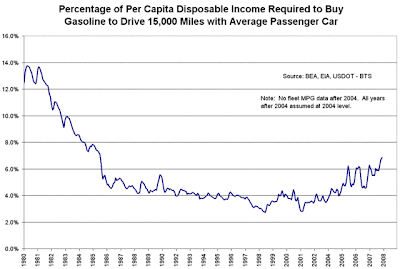 From today’s WSJ: A dollar is a dollar. So if rising prices cut into our purchasing power, textbook economics suggests that we’d carefully weigh all our buying decisions to determine where to cut back, and by how much.
From today’s WSJ: A dollar is a dollar. So if rising prices cut into our purchasing power, textbook economics suggests that we’d carefully weigh all our buying decisions to determine where to cut back, and by how much.
Of course that’s not really the way most people budget. Rather, we put different items in different budget baskets – here’s one for movies, here’s one for clothing, here’s one for gassing up the car. So if clothing prices go up, we’ll cut back on clothing purchases first before cutting back on other things. But even though anecdotal and laboratory evidence suggests this is how we operate, economists have had little success finding evidence of how this works in the real world. Until now.
Economists Justine Hastings at Brown University and Jesse Shapiro at the University of Chicago’s Booth School of Business got data on purchases of gasoline from a large grocery chain covering January 2006 through March 2009. As gasoline prices rose sharply in late 2007 through the summer of 2008, fewer and fewer people opted to buy higher octane midgrade and premium gasoline for their cars, and bought less expensive regular instead. (When prices fell in late 2008, the trend reversed, in spite of the worsening economic climate.)
But what about other purchases? Because some customers held retailer loyalty cards with the grocery store, Hastings and Shapiro were able to track them, too.
Specifically, they looked at purchases of half-gallon cartons of orange juice. The grocery chain carried five brands – four national ones and its own private label. They found that while rising gasoline prices led more people to buy regular, they didn’t prompt people to buy less expensive orange juice brands in an attempt to make back the money they were losing at the pump. “If anything, the direction of our estimates suggests that higher gasoline prices tend to increase the demand for higher-quality orange juice brands,” they write.
An aside: The economists also point out that “Consumer Reports” and others have disputed the wisdom of buying anything but regular for anything but a sports car. With regular averaging $3.86 a gallon in the U.S., versus $4.00 for midgrade and $4.13 for premium, it’s a bit of a mystery why many people would pay up for the questionable benefits of a higher octane grade. But the latest data from the Energy Information Administration suggests that’s what 13% of us still do.

